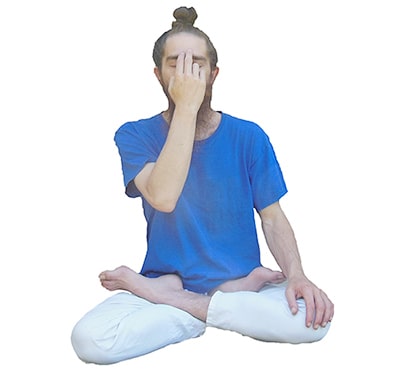
Nadi Shodhana Pranayama

In Sanskrit, Nadi means "channel" or "flow," Shodhana means "purification" and Pranayama means "control of the life force energy" or "breathing exercises." This practice is described in the Gheranda Samhita as well as the Hatha Yoga Pradipika.
This practice is aimed at clearing and purifying the Nadis meaning "energetic pathways" of the energy body and is referred to as energetic pathways, while balancing the Sympathetic and Parasympathetic Nervous Systems.
This practice is pacifying for all three Doshas or body types and is a suitable practice and easy for most anyone. With three stages in this practice, we suggest that you master each stage of the practice before moving to the next stage.
Starting Position
Practice - Variation 1
Close the right nostril with the thumb and inhale through the left nostril.
Inhale as deeply as possible utilizing the abdomen and chest to fill the lungs to the maximum.
At the end of inhalation close the left nostril.
Open the right nostril and exhale.
The exhalation should be slow and the lungs emptied as much as possible.
At the end of exhalation keep the right nostril open and then slowly inhale.
After completing the full inhalation close the? right nostril.
Open the left nostril and exhale.
Practice - Variation 2
The six cleansing actions are intended to be the start of a Yoga practice in order to clean, strengthen, remove toxins and improve the flow of Prana through out the practitioner.
Yoga poses help to elongate and strengthen the muscles of the body as well as to calm the mind for the deeper spiritual practices of Yoga.
Breathing exercises are a great practice to remove carbon dioxide, increase lung capacity as well as being a good preparatory practice for the deepest spiritual practice of Yoga, Meditation.
The four body locks that makes up this practice give the practitioner the ability to hold or lock Prana in certain locations of the body. These practices also allow the practitioner to release blockages that may be holding the practitioner back.
The gestures in this practice include the whole body and are intended to awaken Prana, Chakras as well as Kundalini energy within the practitioner.
Meditation is the highest spiritual practice of Yoga which is why this practice is the most difficult practice to preform, but with correct knowledge and dedication, can be the most profound practice of Yoga.